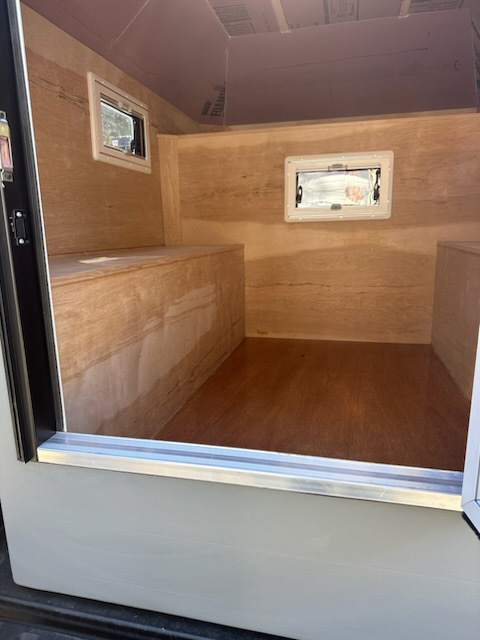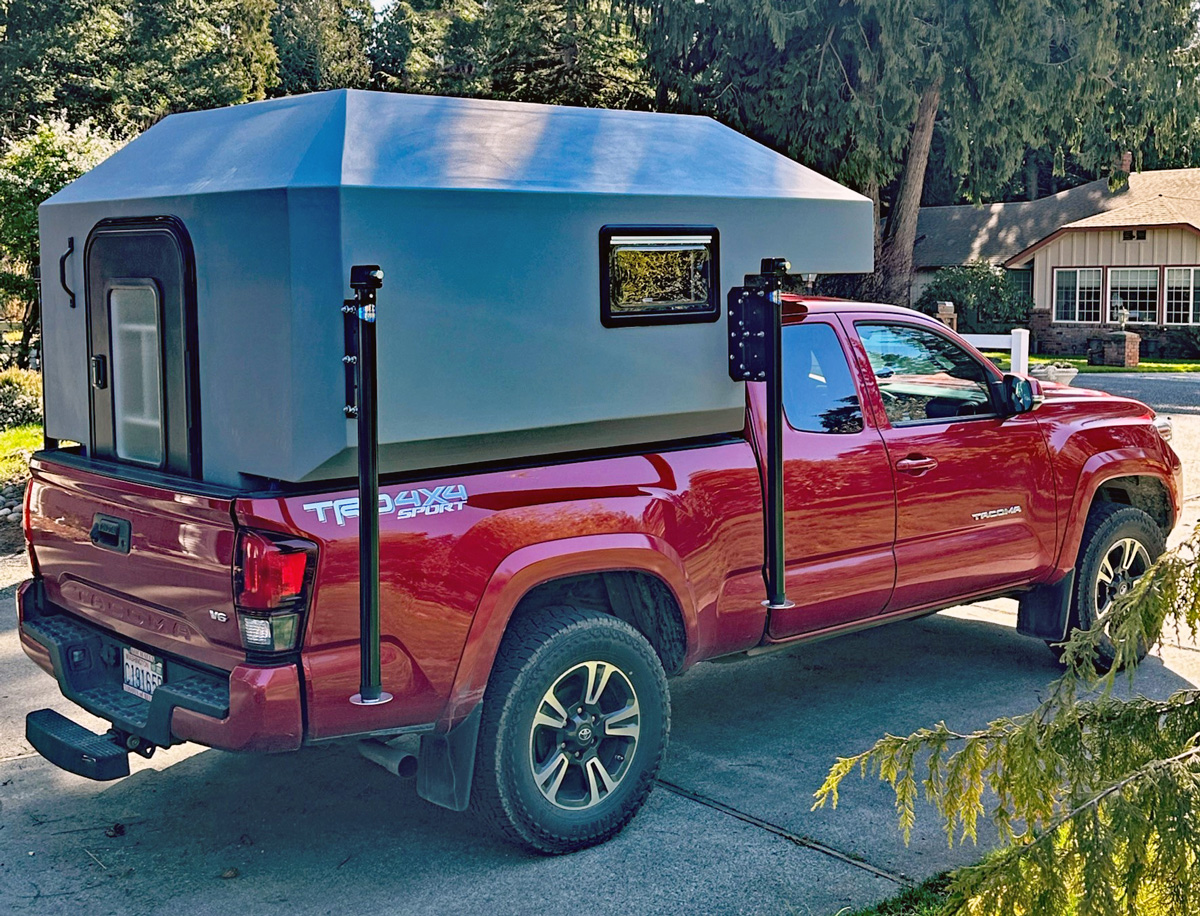
By Paul Butler
As a boat builder and designer, I often look at things and think to myself, “I can build that, only lighter and stronger.” That’s exactly what happened with my latest project. I needed a new camper that would fit in the bed of my Tacoma pickup truck, be lightweight, and have low windage. I wasn’t happy with what I was finding commercially, so I decided to build it and build it better.
The New Truck Camper’s Stats
The new camper I designed is for midsize trucks, with lightweight being the number one priority. It weighs 380 pounds empty. This is about one-third the weight of most commercial versions, which average around 1,000 pounds empty. The payload on my stock Toyota® Tacoma TRD Sport 4×4 is 1,150 pounds. With a full tank of gas, plus a driver, I can add almost 600 lbs and still remain under the gross vehicle weight rating.
To reduce the camper profile and minimize windage, I opted for the interior headroom to be a few inches over five feet. This allows for standing if you bend your neck, but we mostly sit in the camper anyway. Due to the light weight and low profile of the camper, we got great gas efficiency on recent trips in Montana. We set the cruise control at 68 mph, with AC on, and we were never under 19 mpg… sometimes we even got as much as 21 mpg.
Building it Better with WEST SYSTEM
I built the camper primarily out of 4 and 5.5 mil hardwood ply, which were all sealed with WEST SYSTEM® Epoxy. I put a layer of 6 oz. fiberglass cloth on all of the exterior surfaces, plus 10 oz. fiberglass tape on all of the corners. All of the surfaces are covered with 1 ½” structural foam for insulation.
Powering the New Truck Camper
We carry a Goal Zero® 1500 lithium battery which has an inverter to run 110 appliances, like our hot plate. It also runs fans, powers lighting, recharges phones and computers, etc. Because of the small size of the camper, and insulation boards, we can run a small 110-volt heater for less than five minutes to warm the interior on a chilly morning.
Designing the Layout
We decided to keep our interior layout very simple, but if you wanted to build one yourself, the interior can be tailored to suit individual needs. You could finish it off for solo camping, family use, leave it open for hauling, or have removable modular furniture as needed. Bunks can be on each side or sideways and they can be adjustable or removable. There is space for a child’s bunk overhead on each side if desired, with feet extending into the cab-over section. Options abound with a little creativity.

Doors and windows are an individual choice from single or multiple side windows of preferred size and a small or large entry door. We installed a 19 x 19 overhead adjustable marine hatch which provides excellent ventilation with side windows open, and there is still space on the top for two solar panels.
Final Thoughts
I am still considering developing building plans available for purchase based on my prototype, but I have not yet decided. The new project can be seen on my website: click here.
Note: Paul Butler is an avid WEST SYSTEM user and seasoned boat designer/builder. With over 40 years of experience, he has built a legacy of DIY amateur boat construction since his beginnings with his first article published in Popular Science back in 1979. Since then, he’s published over 200 project articles, three DIY boating books, and built 100+ boat prototypes. Paul’s designs range from traditional classics to pioneering ply/epoxy constructs—emphasizing user-friendly plans for amateur builders. Beyond boats, he extends plywood/epoxy techniques to various projects ranging from furniture to houses.
See more of Paul’s work or visit his website:
butlerprojects.com





